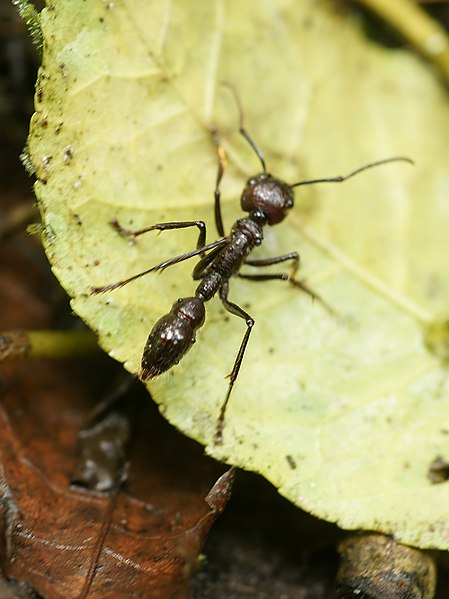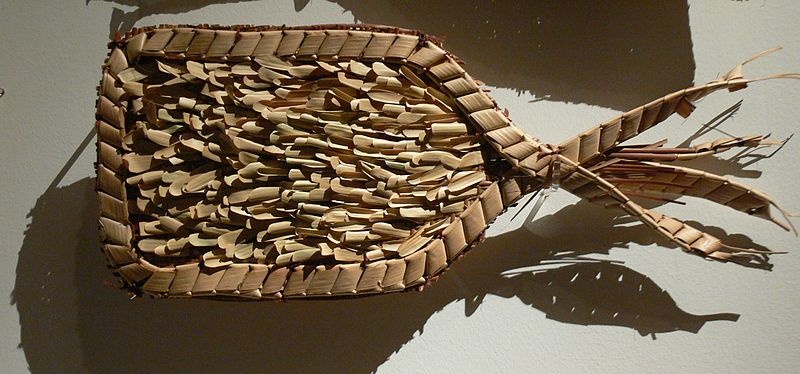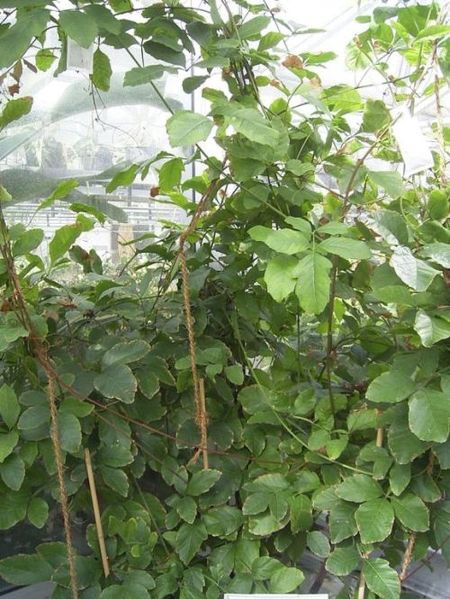Whispers of an ancient tradition resonate through the trees as the moon rises over the dense Amazonian rainforest. The Sateré-Mawé tribe’s secluded village sits deep in the woods, where a frightening initiation ceremony takes place under cover of darkness. This unsettling rite is not for the faint of heart, as young men are forced to confront their greatest fears and push their bodies to the breaking point in order to show their value.
But what lurks in the shadows of this foreboding initiation? The Sateré-Mawé tribe’s coming-of-age ceremony is cloaked in mystery and peril, from the venomous bite of bullet ants to the eerie chants of old rites. Are you prepared to decipher this fascinating tribe’s dark secrets and their uncanny initiation? This is not a voyage for the faint of heart.
Who Are the Mawé People?
The Mawé, also known as the Sateré or Sateré-Mawé, are an indigenous tribe of Brazil’s Amazon region with a long and intriguing history. They have lived in the Amazonas state for millennia and have formed a strong bond with the land and its resources.
The creation and cultivation of guaraná, a popular stimulant still extensively consumed today, is one of the Sateré-Mawé’s most important contributions to Brazilian culture. For decades, the Sateré-Mawé have grown guaraná, and the plant has become essential to their social and cultural customs. The tribe even has a narrative about how the plant was discovered, which involves a magical person and a potent love potion.
Aside from their role in guaraná history, the Sateré-Mawé has a rich cultural heritage that includes unique customs, beliefs, and rituals. The Sateré-Mawé have a strong respect for the natural world and its power, as evidenced by their exquisite body painting and spiritual traditions.
Today, the Sateré-Mawé face several challenges as they strive to preserve their traditional way of life in the face of modernization and land encroachment. Despite these obstacles, they remain tough and proud people dedicated to preserving their culture and legacy for future generations.
View this post on Instagram
The History of the Sateré-Mawé Tribe
The Sateré-Mawé is an Amazonian indigenous group with a long history and culture. Their origin is known as Noçoquém, and it is located on the left bank of the Tapajós, in a rocky region densely forested. The Sateré-Mawé first encountered white men in 1669, when Jesuits established the Tupinambaranas Mission. Warfare, plagues, and persecution by the central government and settlers have significantly diminished the tribe’s traditional area. Sateré-Mawé sites were used to build the cities of Maués, Parintins, and Itaituba.
The Sateré-Mawé refer to “civilizados” as people who are neither Sateré-Mawé nor members of another Indian community. The military, Jesuit, and Carmelite missions, the economic cycle of forest goods, rubber extraction, and city expansion have all diminished the tribe’s native land dramatically. When the Sateré-Mawé region was demarcated in 1978, their towns, sites, roças, graves, and territories for hunting, fishing, gathering, and traveling were located between and near the Marau, Miriti, Urupadi, Manjuru, and Andirá rivers.
There was an increase in the migratory movement towards Manaus in the 1970s, and by the end of the 1990s, over 500 Sateré-Mawé lived in various housing developments on Manaus’ western outskirts. This urban population primarily supports itself by selling arts and crafts to tourists. It is critical to highlight that the urban population is significantly smaller than the tribe’s population before contact with invaders. The Sateré-Mawé have experienced numerous hardships, such as territory decrease, conflict, and epidemics, but they have maintained their culture and customs.
The Language Spoken by the Sateré-Mawé Tribe
The Sateré-Mawé language is part of the Tupi linguistic branch, which is one of South America’s most prominent language groups. It is notable for its complicated verb structure and liberal use of suffixes, which can give the word several shades of meaning. The Sateré-Mawé language is unique from the Guarani-Tupinambá language, which is spoken by other indigenous people in Brazil, according to ethnographer Curt Nimuendaju. Regarding pronouns, the Sateré-Mawé language is comparable to the Curuaya-Munduruku language, while its syntax is closer to the Tupi language.
The occurrence of unique vocabulary that cannot be attributed to any other linguistic family is an intriguing trait of the Sateré-Mawé language. These terms represent the people’s close interaction with the environment and their in-depth knowledge of forest ecology. There are distinct words for various types of soil, trees, fruits, and animals, for example, demonstrating people’s comprehensive understanding of the natural world around them.
Despite their three centuries of exposure to the Portuguese language and Brazilian society, the Sateré-Mawé have managed to preserve their language and culture. Today, most Sateré-Mawé men are bilingual, speaking both their native tongue and Portuguese. Conversely, women tend to speak Sateré-Mawé solely because they are the primary keepers of the community’s traditional knowledge and rituals.
Waumut: The Excruciating Initiation of the Sateré-Mawé Tribe
The Sateré-Mawé tribe conducts a demanding and dangerous initiation ceremony for young males. The Sateré-Mawé have performed the Waumat ritual for centuries. The guys must place their hands in a glove full of bullet ants, a species noted for its incredibly severe stings, to demonstrate their power and fortitude. This ceremony is considered a significant rite of passage for young boys, as it teaches them fundamental virtues such as endurance, bravery, and self-discipline.
Bullet ants, commonly known as Paraponera clavata, are an ant found in Central and South America. The sting of the bullet ants is one of the most painful stings by an insect, with pain levels comparable to being shot or electrocuted. The ants are first captured and carefully placed in a leaf-woven glove, which is then tied tight. When the ants become agitated as a result of being trapped in the glove, they become extremely aggressive and sting anything that comes into contact with them.
The Sateré-Mawé tribe’s young boys are then compelled to place their hands inside the glove and hold them there for several minutes, experiencing the agonizing pain of bullet ant stings. This practice is repeated multiple times during the initiation ceremony, and the resulting discomfort and swelling can persist for several days. The lads must bear this discomfort without displaying symptoms of weakness or suffering, demonstrating their strength and bravery to the rest of the tribe.
View this post on Instagram
Charcoal: A Protection from the Ants’ Venom?
Due to the venom of the bullet ants, the lads’ hands and arms are temporarily immobilized after the initiation process. This can linger for several hours and cause a great deal of agony and pain. Aside from the physical effects, the boys may experience hallucinations and uncontrollable shaking for several days after.
To protect themselves from the venom, the boys’ hands are coated in charcoal, which is thought to prevent the ants from stinging. While this offers some protection, it is not foolproof, and the boys are expected to bear the pain and discomfort without showing signs of weakness.
The initiation process is a series of trials that the lads must experience over the course of several months rather than a single event. To complete the initiation, the lads must place their hands in the ant-filled gloves 20 times, each time experiencing extreme pain and discomfort.
Other Cultures and Traditions of the Sateré-Mawé Tribe
The Sateré-Mawé tribe has a rich material culture that is reflected in their teçume crafts. The guys make these crafts out of the stalks and leaves of numerous Amazonian plants such as caran, arum, and others. Sieves, baskets, tipitis (cylinders used to extract toxins from wild cassava), fans, bags, caps, walls, and roofs are among the goods found in the teçume.
The Porantim, a 1.50-meter-long wooden staff, is an essential and vital feature of Sateré-Mawé cosmology. This staff is carved with geometric shapes and painted white and has both spiritual and social aspects. The Porantim is regarded as the indigenous equivalent of the United States Constitution and the Holy Bible, as it possesses magical abilities such as foreseeing the future. It is also used to settle internal disagreements, inscribed with the original narrative and the war myth, which symbolize the beginnings of Sateré-Mawé history. The Porantim is the highest institution in Sateré-Mawé culture, representing the tribe’s governmental, judicial, religious, and mythical worlds.
According to the Sateré-Mawé origin myth, they think they invented guaraná culture. The plant is native to the Maués-Açu river basin’s highlands, which are precisely located inside Sateré-Mawé traditional area. This historical belief validates the tribe’s moniker “Children of Guaraná.”
The Sateré-Mawé tribe has also perfected the cultivation and processing of Paullinia cupana, a Sapindacea family wild vine. They have successfully cultivated this plant and thoroughly understood its qualities.
Exploring the Sateré-Mawé tribe’s unusual and fascinating initiation process provides an insight into a community that has managed to keep its traditions and beliefs despite decades of contact with the outside world. The Sateré-Mawé people have a rich and complicated culture that is worth learning about, from the terrible bullet ant glove ceremonial to the precious Porantim staff. The Sateré-Mawé have made an unmistakable mark on the Amazonian region and the world through their crafts, language, and expertise of the guaraná plant. We can obtain a better grasp and comprehension of the human experience diversity and the richness of the natural world by diving further into their rituals and practices.



